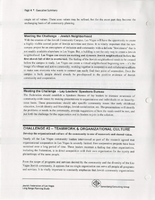Search the Special Collections and Archives Portal
Search Results
Lincoln County Archaeological Initiative Collection
Identifier
Abstract
The Lincoln County Archaeological Initiative Collection (2016-2019) contains digital files of oral histories collected as part of A Ranching and Farming Context for Lincoln County, Nevada, ca. 1857 to 1934 (Oliver et al. 2018). The collection consists of thirteen digital oral history recordings and corresponding transcripts, as well as a final report of phase one of the project. The entire collection is digital files.
Archival Collection
University of Nevada, Las Vegas University Parking and Traffic Control Committee Records
Identifier
Abstract
The University of Nevada, Las Vegas (UNLV) University Parking and Traffic Control Committee Records (1969-1992) contain meeting minutes, correspondence, reports, parking regulations, and newsletters. The UNLV Parking and Traffic Control Committee reviewed various policies and regulations for UNLV parking facilities and made recommendations for parking lot and traffic flow changes, as well as parking fines and permit fees.
Archival Collection
Frances Intravia Photograph Collection
Identifier
Abstract
The Frances Intravia Photograph Collection (approximately 1948 to 1979) contains three black-and-white photographic prints. The images depict Albert and Arabell Lee Hafner, author of 100 Years on the Muddy, visiting the St. Thomas, Nevada townsite after the Lake Mead water levels dropped enough make it visible. One of the prints is an original from approximately 1948 to 1952, and the other two are reproductions of images taken during the same period.
Archival Collection
Victor J. Zerga oral history interview
Identifier
Abstract
Oral history interview with Victor J. Zerga conducted by David Jukich on April 03, 1976 for the Ralph Roske Oral History Project on Early Las Vegas. Zerga gives insight into the field of nursing and discusses the role that ranching had in Las Vegas, Nevada.
Archival Collection
Monty Brandt Photograph Collection
Identifier
Abstract
The Monty Brandt Photograph Collection consists of black-and-white photographic prints of the White Cross Drug Store on Fremont Street in Las Vegas, Nevada from 1924 and 1955. Images include views of Fremont Street, as well as interior and exterior views of the White Cross Drug Store.
Archival Collection
Marcus Mason oral history interview
Identifier
Abstract
Oral history interview with Marcus Mason conducted by Leon Green on February 04, 2013 for the African Americans in Las Vegas: a Collaborative Oral History Project. Mason talks about his childhood in Las Vegas, Nevada, his parents’ past occupations, and how his religious upbringing influenced his career choices as an adult.
Archival Collection

Transcript of interview with Arby Hambric by Claytee D. White, September 23, 2015
Date
Archival Collection
Description
Arby L. Hambric's book entitled, "To Thee I See: From picking in the fields of Texas to cooking for dignitaries on U.S. Navy ships, a journey I wouldn't change," describes his profound journey from working in the cotton fields as a child to being drafted into the U.S. Navy, before completing high school. During this interview, he recalls the significant achievements of the "Red Tails" and the Tuskegee Airmen. Beginning his 20 year Navy career before military integration, Arby describes the racial tensions that plagued the U.S. Navy in the 1940s, and discusses how he was able to successfully navigate that racist environment for two decades and three war eras. Arby enrolled in San Diego State College after leaving the U.S. Navy. He also worked as maintenance personnel for Sears and Roebuck and started a catering business with his wife. He became a member of the Southern Nevada Enterprise Community, SNEC Board upon moving to Las Vegas, Nevada, after his wife died. With a family legacy he can be proud of, Arby highlights the achievements of his great grandson Taquan Mizzell, a Virginia Cavaliers running back at the University of Virginia. As a Navy veteran, Arby often volunteered his time and resources to help others in need. He recalls driving the sick and elderly back and forth from the Westside community to Valley Hospital or University Medical Center, UMC. He also discusses government enforced road closures and a wall that was built to block Blacks from entering the new downtown. This interview sheds new light on military integration and offers key strategies for overcoming environmental racism. Arby mentions a documentary about the closing of the wall and offers his predictions on the future of the Westside.
Text

Transcript of interview with George Burns by Sandy Fink, April 03, 1976
Date
Archival Collection
Description
Text

Jewish Federation of Las Vegas long-range planning study, 2000
Date
Archival Collection
Description
Long-range planning study conducted and prepared by the Levenberg Consulting Group regarding the Jewish community of Las Vegas with particular attention to Jewish elderly, the economically disadvantaged, young adults, and Jewish education at all ages.
Text

Meeting minutes for Consolidated Student Senate University of Nevada, Las Vegas, September 29, 1997
Date
Archival Collection
Description
Text
